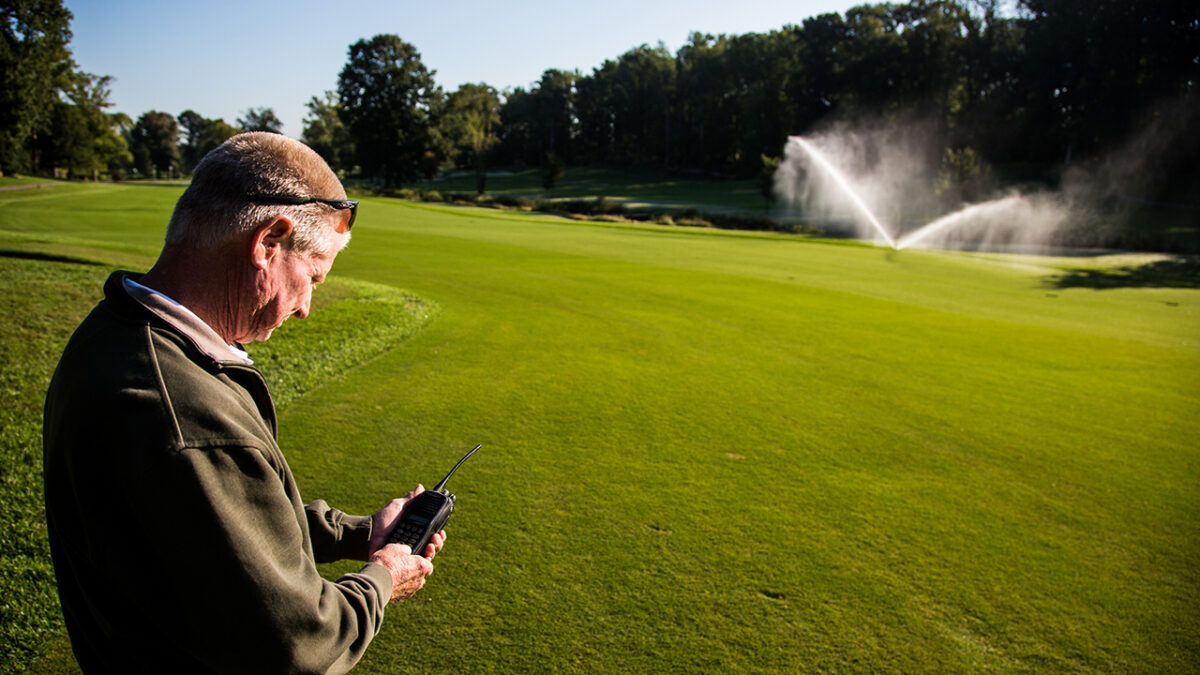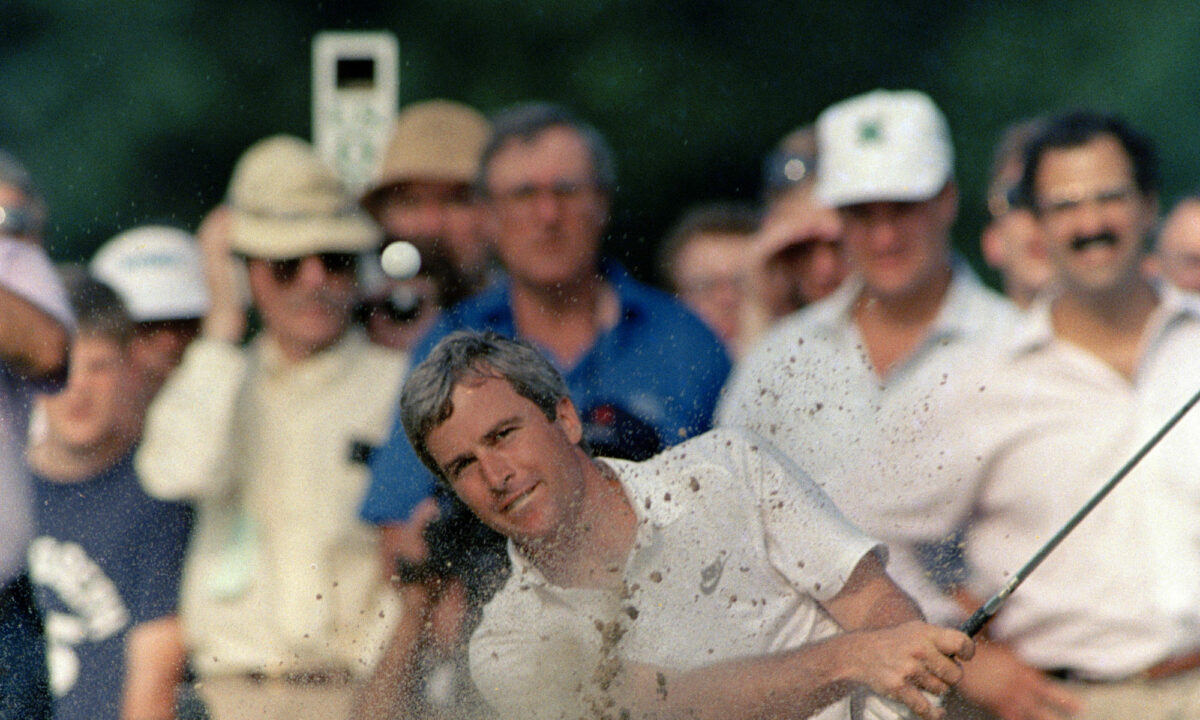The U.S. Golf Association doesn’t just run championships and make rules. The governing body of golf in the U.S. and Mexico also has invested nearly $47 million dollars in the past four decades to promote turfgrass and environmental research.
It’s money well spent, as the USGA says its recently renamed Mike Davis Program for Advancing Golf Course Management and its related research saves the golf industry an estimated $1.92 billion annually. Much of that comes in the areas of water savings and more efficient use of fertilizer and pesticide.
In an era of droughts and increasingly demanding water restrictions, particularly in the U.S. West, such savings and improved agronomic practices not only help golf course superintendents provide better playing surfaces, in many ways the program has helped make the sport possible at all in the desert environments of the West.
As major lakes go dry and the Colorado River provides decreased flow to seven states, golf is often targeted as a waste of water. The USGA’s stewardship in sustainability has become even more important to an industry that provides a $192 billion annual economic impact involving some 2 million jobs in the U.S., as measured by the American Golf Industry Coalition.
“Golf Course superintendents have always been under scrutiny for water use,” Brian Whitlark, the USGA’s senior consulting agronomist for the West Region, told Golfweek. “… Everyone is in the same boat, and everyone is concerned about water use. I think we’re all – golf course superintendents, the research community, USGA agronomists – we’re all working together to find methods, strategies and technologies to reduce water use with the goal of still producing a good playing surface and keep business thriving. We’re all working toward that, and we’re definitely making strides.”

Many of those strides are the result of the Mike Davis Program, which was launched in 1982 and until 2021 was known as the Turfgrass Environmental Research Program before being renamed in honor of the former USGA executive director/CEO.
In 2022, the program opted to provide funding for more than 80 university research projects, many of which focus on reducing water usage either though improved irrigation or the development of more drought-resistant grasses. The USGA said it invested $1.9 million in those programs in 2022, with more than a dozen universities receiving grants for both short-term and long-term projects.
“We’re trying to think 10 to 15 years into the future, what are the problems now, how we think that is going to change, and how we need to alter our research investment to make sure we have answers for those problems,” said Dr. Cole Thompson, the USGA’s director of turfgrass and environmental research.
Research topics tackle water sustainability in many ways, ranging from the development of better grasses that requires less water all the way to technology such as soil-moisture monitors that help golf course superintendents determine when to water and how much without wasting recourses.
Whitlark said most courses in the West have made dramatic changes in recent years to tackle water use responsibly, and the USGA-funded research has trickled down through the industry to help.
“I’m excited about drip irrigation,” Whitlark said. “I’m excited about turf conversion to bermudagrass. I’m excited about all these universities working together to breed a new grass that will stay green and grow year round. Those are the areas that will really change the industry over the next 10 to 15 years.”
Whitlark said there are many misconceptions among the non-golfing public about how course superintendents approach water use. Too many people, he said, are under the impression that golf course managers are trying to grow as much lush green grass as possible, and that they will use as much water as is available.
“Something that needs to be said, especially to non-golfers, is that the last thing golf course superintendents want to do is to produce lush green conditions,” Whitlark said. “I’ll tell you why: That means it’s an overwatered golf course. It’s not a great playing surface to play on lush green conditions.
“What superintendents want is to produce a firm golf course and healthy grass. And that can be a green golf course, I’m not talking about brown, it’s just not lush green. Golf course superintendents are producing a playing surface. Non-golfers look at their own lawn or gardens with lush green, but it’s so different on a golf course. It means just enough water to keep the grass healthy, and that’s it.”

Advancements in recent years have been able to cut water usage by as much as 30 percent at many courses, Whitlark said. Much of that has come through targeted water usage, as research topics have made their way into real-world applications. Other savings come through reduced turf acreage as courses replace traditional rough with native areas that require much less water. Many research topics involve the use of effluent water where available, even the use of new strains of grass such as paspalum that are saltwater tolerant.
Technology plays a great role. Instead of sprinkling blindly over dozens of acres of turf, modern course superintendents can individually control each of thousands of sprinkler heads on a course. Some courses have investigated targeted drip irrigation, providing just enough water to exactly the correct location. Advanced irrigation computer systems help superintendents further target areas identified by in-ground sensors – often in cooperation with onsite weather stations – as needing moisture replenishment while not overwatering nearby areas.
“Just by raising awareness about these types of strategies and getting people to help implement them, I think we can save a lot of water in the West especially,” Thompson said.
As climate changes and demands on water increase particularly in Western states, will it all be enough to save the sport? Thompson points out that golf’s water usage is, no pun intended, just a drop in the bucket of total public consumption. But as demands increase, he anticipates research helping to keep golf afloat as a whole.
Mike Whan, who became CEO of the USGA in 2021, has pledged to continue the organization’s investments in research to find ways to address water concerns and other environmental challenges.
“A core focus of the USGA is to ensure golf is not only thriving today, but it is growing in the next 20, 30 and 50 years,” Whan said in a media release announcing this year’s grant recipients. “To ensure future success, we need to continually invest in efforts that can address challenges that our game will face long-term – like water scarcity, the cost of labor/resources and the availability of land.
“We are making significant investments in research projects that will create an even more resource-friendly game. These advances are critically important steps to ensure that golf remains nimble and innovative in its approach to long-term sustainability.”










